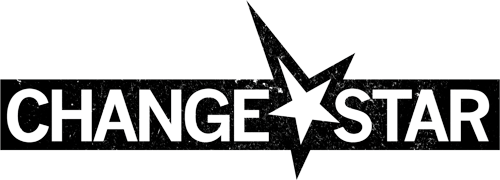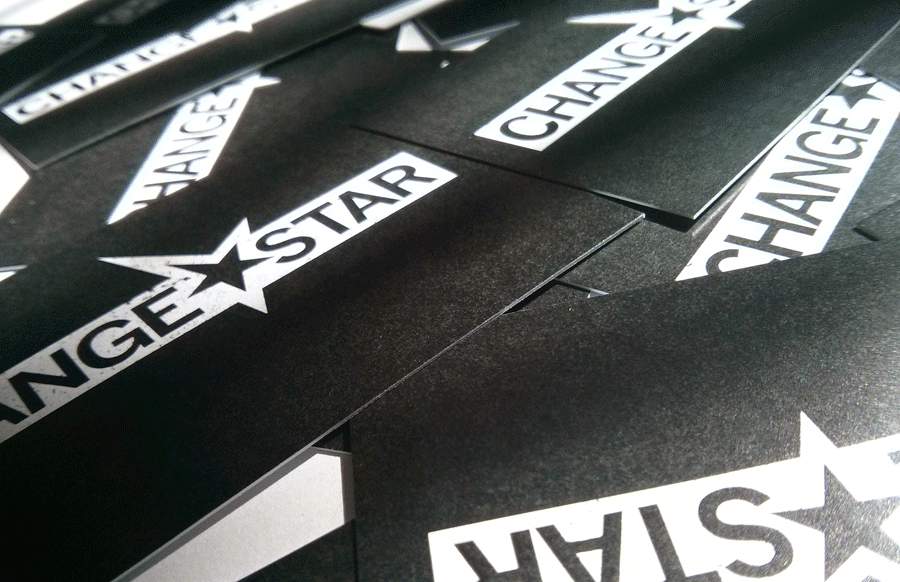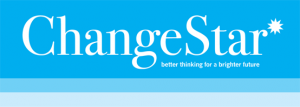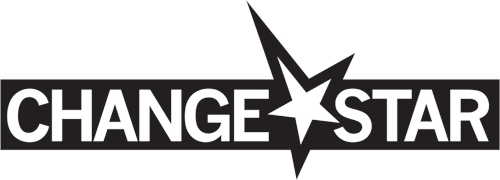The ChangeStar rebranding project
We’ve recently completed an agency rebranding and repositioning process at ChangeStar and we thought it would be a good idea to share this experience to show how small organisations with limited resources can successfully complete such a project. We decided to embark on a rebranding exercise after a period of research showed us that there was a clear need for innovation in the charity sector. We realised that there is an opportunity for an agency to base it’s whole approach around the donor journey and to deliver messages through a combination of varied but appropriate channels or media. In short a strategic integrated, media-neutral data-driven agency (enough buzz-words yet?).
To achieve this ambition we needed a vehicle to communicate this evolution; essentially a re-brand and repositioning of the agency which would allow us to talk credibly about our new thinking and services. In my previous incarnations working for advertising agencies I’ve been involved in several large-scale branding projects that can take years, easily burn thousands, if not millions in budget – and still not be particularly successful. In this case ChangeStar had a budget of virtually zero and a timeline of a couple of months. Yet despite these restrictions it is possible to deliver an effective rebranding project if a few fundamental points are observed:
1. Write a good brief based on a coherent strategic analysis.
Before you do anything else, simply define why there is a need for rebranding and what is the specific point to communicate? in other words; what does the business actually do? To be able to succinctly communicate what your organisation does – in one short sentence – may seem elementary but it is in my experience, a primary test of a business idea. The failure of this test is symptomatic of a badly thought out or too complex a concept (The rough rule of thumb being the old engineers saying “if it doesn’t look right – then it isn’t right” ) a problem which no amount of rebranding or repositioning can cure. But, get it right and you have the building blocks of the new brand. In our case, our one sentence distillation of what ChangeStar does became:
“Helping good causes connect with people”
Which encapsulates everything that we think is important and unique about our agency; We only work with good causes that we are passionate about and we work with them, collaboratively to efficiently get their message across to individuals. From all of this we developed a creative brief and a ‘vision’ document. (All of this research work doesn’t go to waste by the way, it all gets recycled as copy and comment; it forms the basis of our creds presentation, website and promotional literature).
2. Unity – Get everyone is behind it.
Byzantine levels of hierarchy and obscure, often conflicting and opposing departments (sometimes involving outright guerilla warfare) within large organisations slow everything down and drive up costs – this usually is where the budget disappears, not on choosing a colour pallette. Small organisations have the advantage of agility. Use this to make unified decisions and rapidly move the project on.
3. Decide who has input.
Decide up-front who needs to be involved in decision making…and once a decision is made – stick to it! The Creative Directors role here is to slyly educate and steer the decision makers in the type of decisions that they need to be made – most importantly base their choices from the audiences perspective and not on personal likes and prejudices ( I once had a client who insisted on a ‘taupe and magnolia’ website colour palette because these were the colours he’d used to decorated his new house…). Again, small organisations have a distinct advantage; you should be able sit together, discuss and debate on a normal human level and arrive at a consensus that could take months, years even, in larger organisations.
Creative development.
1.Defining
The first step of the actual creative development process was to do an exploratory creative audit. The purpose of which is to evaluate what is good and bad about the existing brand and the various brand properties and materials – everything from websites, social media, letterheads, presentations all the way down to email footers. This exercise also it gave us a feeling for the scope of the project; a defined set of materials that we needed to produce and an idea of what needed to be changed (or if it needed to be changed at all).
2. Refining
Once we’d made this audit we started to develop the visible component of the brand. My approach to branding design is to start with a fairly wide set of choices and gradually refine these down to a final, finished, polished creative piece through an iterative process of defining, testing and refining. Put simply, this means initially creating a series of distinct but different rough prototypes that can trigger debate and drive the design choices. These choices can then be tested against how we want the brand to be perceived and then further refined and tested. One simple way of doing this is to define the brand through a list of Keywords or phrases:
- Controversial
- Passionate
- Outside the norm (for the sector)
- Willing to be controversial
- Commercial
- Contemporary
- Challenging
- Modern
- Human
- Authoritative
- Memorable
- Dynamic
…and test it against the brand design options (here’s an example of some of the early logo choices we used):
Again, small organisations do have an advantage here in that they are be able to quickly make decisions with a small number of stakeholders. It’s the role of the CD to run and steer this process. My favoured method is to sacrifice a little inclusivity for the sake of expedience i.e. speed things up by operating on a ‘need-to-know’ basis – only get input when it is really needed rather than a completely open, inclusive process. All of the above steps can be completed in a few weeks. However, once a design route has been selected time IS needed to live with the design for a while. Blind enthusiasm (especially from creative types!) can easily drive the wrong choice – let this enthusiasm dissipate over a week or so and see if the designs still ‘work’.
3. Delivering
This design came out as the clear winner:
It tested well against our keyword definitions; ‘contemporary’, ‘memorable’, ‘Dynamic’ etc. with the star motif representing dynamic change, the ‘spark of inspiration’ and the type (Helvetica Neue) delivering a strong, confident modern statement. We further refined the designs incorporating a bright CMYK colour palette and emphasising the dynamic ‘spark’ motif:
We tested this Alpha version by trying it out in various materials – creds presentations, print, web, social and so-on. After living with it for a week or so we decided that the palette was a bit too synthetic (“Disco” – thanks Claire) and that we should promote the ‘human’ and approachable aspects of the company by making the palette a little more natural and the overall look more hand-printed: 

The usage of the final brand design was defined in a simple style guideline document specifying the colour palette and typography and setting out how the brand should be used. And finally, the new branding was applied to all of our materials, including a new website and social media presence ( that we also built from scratch in three weeks – but that’s another story).
Simon Crab, Creative Director.
Email: simon@changestar.co.uk
IOF Scotland conference
21st October and 22nd October 2014. 11:55 – 12:55 Thistle Glasgow Hotel
I’m running a workshop at the IOF conference in Scotland called ‘Branding on a Buddget – Live!’ where participants bring along their branding issues and I do a real-time analysis and creative development session. Should be loads of fun! Let me know if you want to attend:
“This session will cover how charities can efficiently improve their brand on a minimal budget. The format will be a live workshop/presentation where charities can submit their brand for a real-time assessment and brand development consultation – covering all the issues relating to developing a brand; strategy,conceptual process, design, digital, print and so-on.”








